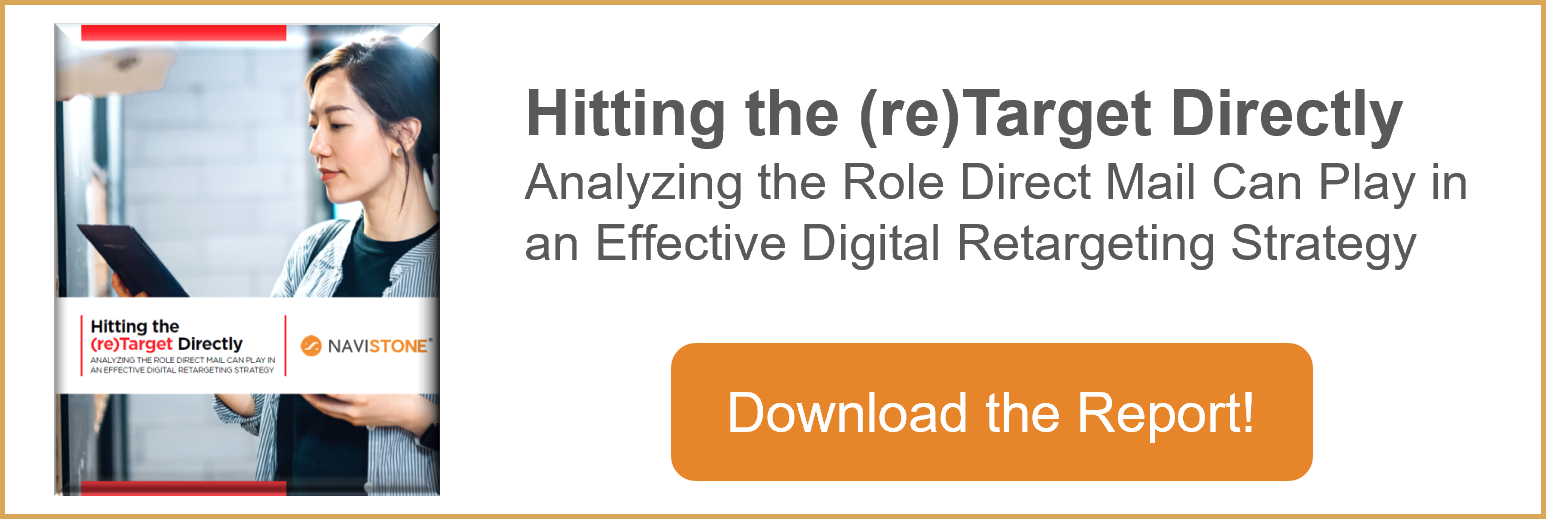
Successful brands are listening to their consumers and allocating more funds towards intent-based marketing. To understand this recent change, we must delve into the ever-changing world of marketing.
Consumer Happiness Begins with Insightful Marketing. Are You Delivering?
To make it in today’s ultra-competitive industries, brands must differentiate themselves by going above and beyond their products and services. We live in an ‘Experience Economy’ where the consumer's connection with the brand is of the utmost importance. A tailored experience is key in communicating with consumers as it makes them 80% more likely to convert. Behavioral data isolates consumer hints which consumers expect brands to utilize in their marketing efforts.
Intent data provides two major pieces to the puzzle: who is raising their hand, and how to personalize their individual buyer’s journey.
Successful brands are listening to their consumers and allocating more funds towards intent-based marketing. To understand this recent change, we must delve into the ever-changing world of marketing.
Today’s Marketing Climate
Apple’s privacy changes and the impending depreciation of third-party cookies demonstrate the ongoing alterations of the marketing sphere. Demand has caused social media ad prices to skyrocket, and iOS 14 affected the internal measurability of these ads by 30-50%. On top of all these recent changes in the digital space, companies are planning for a recession, vastly impacting marketing spend. Where you allocate your budget and seeing positive ROAS could be a “make it or break it” deal.
Overcoming market uncertainty is a marketer’s number one challenge and the pressure is on.
To overcome these ongoing obstacles, successful marketers are spending more time and money to listen to their consumers and establish a loyal connection.
Why Consumers Want Intent-Based Marketing?
If only marketing budgets were bottomless; realistically, one needs to prioritize their remarketing efforts to maximize ad spend. To better allocate funds, data-driven marketers are utilizing intent for easy conversions. Intent-based marketing examines online behavioral data to deliver context targeted ads at the moment the buyer is likely to purchase.
Every time an individual visits your site they are providing clues about their intentions. By analyzing the data and scoring individuals, you can determine if a marketing message would motivate the prospect to purchase - if the marketing spend on that individual is worth it.
If someone stumbles upon your page for a second, they are probably unlikely to purchase and should not be as prioritized. A prospect who visits your site a couple times, looks at multiple pages, and puts a product in their cart or attempts a fill form - this individual is screaming, ‘I’m worthy’! They know your site, they know you as a brand, but for whatever reason abandoned.
Knowing now that this individual should be selected for a remarketing campaign, the context of their behavior personalizes their remarketing journey, as well as the medium (display, email, print) by which they receive the message.
Personalization is advantageous to both parties. 66% of customers desire a tailored experience and expect brands to understand their needs and expectations. On the other side, marketers who use personalization witnessed a rise in business outcomes by 97%. This is why intent data is so important. It is expected by consumers and delivers positive results. Untargeted ads on the other hand may prove harmful.
In addition to adding value to customer acquisition efforts, a personalized ad experience creates loyal customers, as 70% will not go to a competitor if they feel the brand truly understands them as an individual. However, not listening to your consumers by supplying impersonal shopping experiences can be harmful with 71% being frustrated by poor marketing decisions.
Blasted Ads
The average consumer is blasted with over 10,000 ads every day! The last thing that you want is your ads to be obnoxious or intrusive to the consumer. These ads are not only a disruption to what the consumer is trying to do online but have resulted in 85% of consumers having a poor opinion of the advertised brand. Creepy ‘follow me’ ads can turn a prospect off a brand and cause concern about their online privacy.
With privacy thoughts at the forefront, marketers must walk a fine line of trying to be personalized without being intrusive. Therefore, focusing one’s budget on understanding who is on your site to target them appropriately is paramount. Knowing that an individual has spent time and is interested in specific products allows for personalized marketing content rather than a random display of ads.
Targeting in a meaningful way at the right moment is crucial, but with all the changes to the digital marketing landscape, brands are questioning their approach. Utilizing first party intent data for personalized retargeting is the most privacy compliant and customer approved method. While this approach works well for known customers, it is less effective with unknown visitors.
Sending Direct Mail to Unknown Visitors in a Privacy Compliant Way
Without relying on third-party cookies to provide retargeting information, marketers are switching to first-party data solutions to identify who is on their website. Depending on the platform, these solutions can be CPRA compliant because you have ownership of your own data. Using first party data is the most privacy compliant way to reach your future customers.
Although there are sources that can help you indicate intent of known browsers, unknown browsers make up on average 95% of the website traffic. Personalized content paired with the right audience can enable you to get ahead of the competition.
Conclusion of Consumer Delight
Data-driven marketers are utilizing behavioral data to better understand their audiences and establish meaningful relationships. No two customers are the same, and by leveraging intent data, brands can truly connect with their customers throughout each unique buying journey.
With all the unknowns in the marketing world, marketers need to unmask their unknown browsers – revealing the true individual to establish a genuine and happy experience. (Privacy compliant of course)


Lookalike Audiences Enhance customer acquisition by identifying high-potential prospects, boosting response rates, and lowering advertising costs.
Retargeting Postcards Double the performance of your direct mail retargeting.
Amplify Recognize unknown visitors who are actually customers. Add 20-40% to your ESP/CRM campaigns.
IQ Mail Retain customers with personalized, timely messages for those opting out of digital channels.






Comments